#rat penis
Text
Im fucking crying has anyone seen the AI diagrams in the Scientific Study yet?
So, there was a Paper published on the 13th February 2024.
It was published in Frontiers in Cell and developemental Biology, titled
"Cellular functions of
spermatogonial stem cells in
relation to JAK/STAT
signaling pathway""
So far so good, right?
Not knowing anything about the topic, youd exepect a regular Paper: full of scientific theories hopefully to be confirmed and used to widen our human horizons with knowledge.
WRONG. 10 METERS RAT PENIS
Figure 1: Dissilced rat penis.
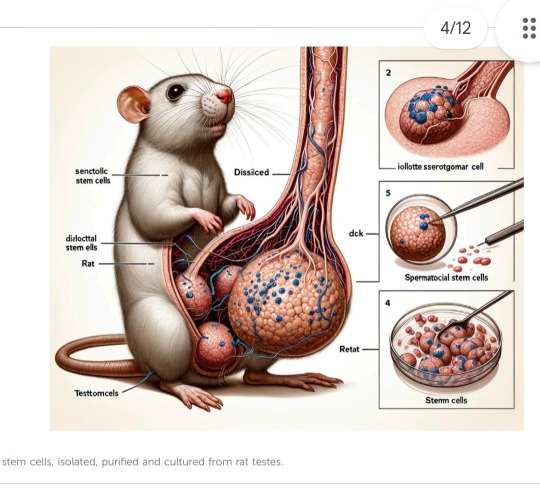
YES. This was a real picture included in the Paper. I think even without looking at rat dicks regularly (or if ever), you can /kinda/ guess this looks wrong.
If you dont know anything about rat dicks (dont blame you) seeing text like "iollotte sserotgomar cell" or "dck" or "di§locttal stem ells" should make you go hm. Mayhaps this may be wrong.
Another graphic shows the JAK/STAT signaling pathway.
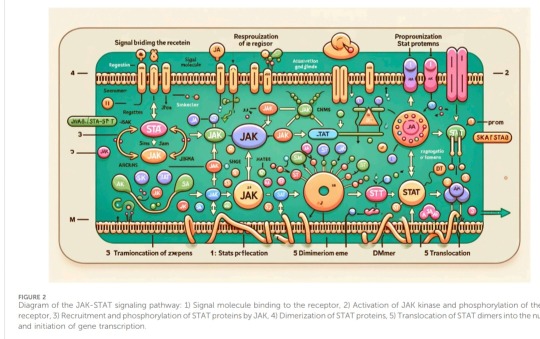
This...is wrong. You cant read the labels. Its wrong and theres non existing symbols and letters and just imagine, imagine youre a newbie Student or scientist or even regular non-academic trying to read this.
Its teaches you nothing and only gives false information.
Of course, this paper passed /2 reviewers/ who said nothing is wrong with it!
This is absolutly unacceptable. Luckily the paper has been retracted now (16.02.2024)

But this is unacceptable. It should never have passed ANY reviewers and saying their job is to rate the scientific merit of the text without looking at the pictures is pure bullshit.
In a scientific papers, graphics and diagrams should have and need scientific merit and integrity, this is the whole point of writing it!
Shame on anyone for letting it get published and i wish the authors would have commissioned someone or even created graphics themselves- no matter how 'crude' or non aesthetic, any graphic drawn in a scientific manner is a thousand times better than AI. Please, stop using AI for important things like that.
I cant say much to the content of the text, but if this was a great paper- now its forever ruined as the Rat dick paper and i wouldnt trust any of the scientists working on it to have honesty and integrity on new papers. I wouldnt publish them.
Lazyness in academia is one thing, but this is just...so bad its sad.
Now, lets look some cells from the paper, shall we?

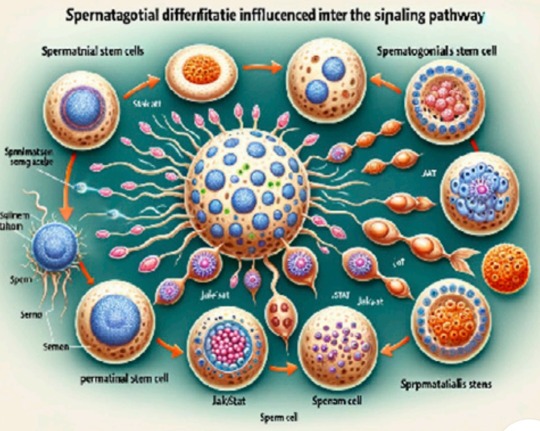

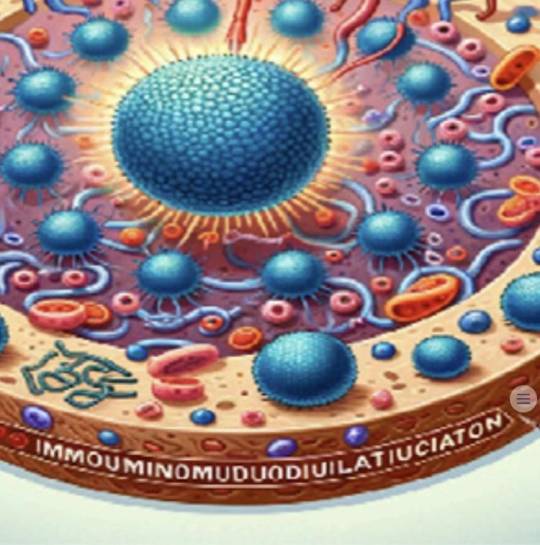
(I am in distress. This is not a cell.
This is not a cell girl help)
To end this on a better note, shout out to this great tweet lmao!

#tag yourself im an iollotte sserotgomar cell <3#might as well use Ts as error bars. i am crying#academia#papers#frontiers#JAK/STAT#Cellular functions of
spermatogonial stem cells in
relation to JAK/STAT
signaling pathway#jak stat signal pathway#science#scientist#ai#ai art#ai generated#ai image#ai impact#rat penis#rat penis paper
19 notes
·
View notes
Text
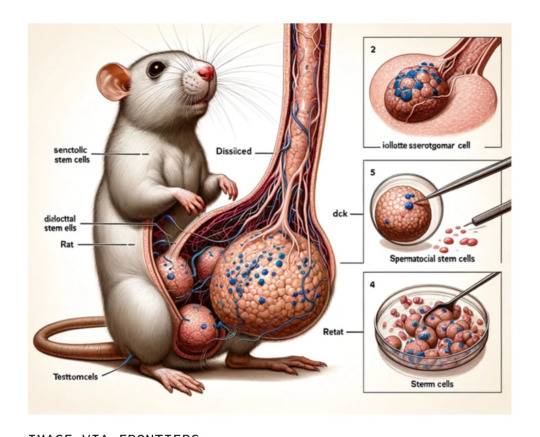
Official AI-Generated Massive Rat Penis Post
#official penis post#penish#AI#this got thru PEER REVIEW and was published y’all#scary#win for big dick fans though?#rat
264 notes
·
View notes
Text
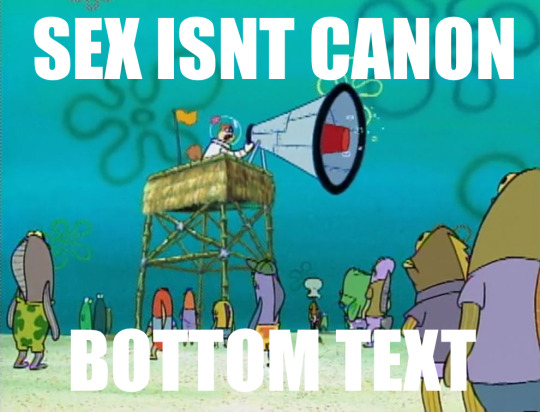

Crazy that I thought this would be a tame fandom when I first wandered through because the robots make a point about being creatures who can’t reproduce sexually. Haha… heh… crazy……
#they’re like amoebas#this is a joke#ITS A JOKE#*gets consumed by the rats*#oh golly a franchise about characters who literally physically can’t have sex ᕕ( ᐛ )ᕗ#bet this place will have way less drama surrounding shipping and ficporn#ohohohohho#lmao#oh worm?#they gave them all penis?!#starts sobbing#Mac mumbles
1K notes
·
View notes
Text
I need to read a fic about Miguel scaring the absolute shit out of the spider-kids; like tearing out people's hearts and eyes then eating them level of scary. I want him to lose his complete shit because he's spiderlings got hurt. Now they're just so terrified of him and Miguel doesn't know what to do. 😔
Please I need this fic so badly. 😭🙏
#across the spiderverse#spider man: across the spider verse#spiderman atsv#parental miguel o'hara#miguel o'hara#spiderkids#spider-kids#hobie brown#pavitr prabhakar#miles morales#gwen stacy#peter benjamin parker#spider noir#peni parker#since peni is telepathically connected to a straight up spider i would assume she be fine with spiders' more violent habits#or at least used to it#that's a pretty grood fic idea actually#she would just see Miguel eating a rat or something and not even blink a eye at it#so she's not to ✨ traumatized ✨
114 notes
·
View notes
Text

am i stupid or is this the funniest shot ever put to film
#later this rat will scurry around with a disembodied penis#reanimator#beyond reanimator#jeffrey combs#herbert west
65 notes
·
View notes
Text
Art thou kidding me?

10 notes
·
View notes
Text
As we all Dracula Daily again, I would like to take the time to remind you all that The Route of Ice and Salt by Jose Luis Zarate is about Dracula’s boat trip on the Demeter from Varna to Whitby and is the most hysterically horny and gay book I have ever read and I am always miffed as to why it is not more popular
#motvd book club#the boat is dracula and the rats are draculas and everybodys penis is also a dracula#10/10 absolutely no notes
27 notes
·
View notes
Text

take it rourt(rat court)
#mcyt#undescribed#rats smp#just watched eloise's vod it was so funny#thr fact the mom was watching. the trial by combat. the penis smp has met its match i thought i was watching shittyfartbaby at the electric#chair scene when garbage rat a mratyn just started stabbing each other. also#whats with the fucking haunted statues? like i cannot stress enough this vod was mostly Eloise being haunted#then a trial#anyways.
70 notes
·
View notes
Text
it's big rat theygirl hours
59 notes
·
View notes
Text
Aight after years of avoiding it I finally caved and watched beyond re-ani.
Conclusions:

#It's a shame it sucks so bad cus dilf herbert was such a look.#Only enjoyable thing about that movie fr#beyond reanimator#that rat penis fight at the end.. it left me speechless#reanimator#Herbert west
21 notes
·
View notes
Text

Absolutely losing it over the page for dick dastardly on the hanna-barbera wiki
15 notes
·
View notes
Text
Bad news yall, applying to medical school is going to hinder my fanfiction writing abilities ✊😔
#damn you medical school#lemme write my fanfiction about a dead lil guy with flomfy white rat hair#*opens biology textbook to page with penis* this will affect the groupchat#I’m gonna have to major in pre-med and Biology#pray for me boys lest I become one of Danny phantoms subjects#medical school
28 notes
·
View notes
Text
As someone who's about to work in biology research, I can't stay silent about the Frontiers AI rat penis event.
LOOK AT HIM

WARNING: LONG AF. STRAP YOURSELVES IN, WITCHES!
I'll explain in detail, in a way that's accessible for non-scientists, everything that's wrong with this. Recently, a scientific article with AI generated figures was published in the journal "Frontiers in cell and developmental biology".
Here's the link to download this (now retracted) article in PDF.
(disclamer: I am a master's student in neuroscience with a bachelor's in biology, so, definitely not a rat ball specialist, and I have never published anything)
Context
This is a review article about the relationship between rat ball cells and a signalling pathway that happens inside cells.
What's a review article? It's an article that is meant to summarise everything we know about a certain topic, based on recent research articles. This means that the authors of a review don't conduct any experiments: they gather information from people who did. It sounds easy but it's not. They have to piece together a very complex puzzle. Sometimes an article says that molecule A interacts with molecule B and gives you such and such effects, but in another article they say they haven't found any effect in particular of molecules A and B, and a third article will tell you that the effect exists in cell cultures but not in an actual animal because molecule C is also there... And there are dozens and dozens of articles they have to sift through, dissect, evaluate etc. And then they have to make sense of that whole hoopla. And then they have to explain it to everyone.
BUT. A review is probably the easiest type of scientific article to fake. Because for a research article, you have to conduct actual experiments and provide results. For a meta-analysis, you will come under great scruitiny because they are expected to be very reliable and when a new meta-analysis drops, the hype in the field is big. People will see through it in seconds. But a bullshit review? People are not as interested in picking apart reviews, because there are no experimental results directly shown in them, no statistical calculations or criteria to criticise etc. It's almost all text. You can AI generate text. You can write lazily and it will still have the appearance of a review from afar.
However, a review has figures. The figures are meant to illustrate the mechanisms of the phenomena described in the review. Usually, those are very clean, easy to understand even for non-specialists, they are your best friend when you're not too sure what's going in this wall of text and you want to get the gist. Review figures are good educational tools, so you need to have a good understanding of the topic and be concise to make a good review figure. You can't fake that with AI.
In order to publish a review, just like any other scientific article, you have to submit it to a scientific journal. You have to format your article exaclty according to the journal's criteria, (and if you were wondering, no you don't get paid for doing the journal's job for them, nor do you get paid for providing them content you took years to produce, in fact you have to pay them, the journal, thousands of dollars). Your article will then go through several rounds of selection and revisions. First the journal will decide whether or not your article is relevant to their area of expertise (like, if you try to publish a paper on quantum mechanics to the journal "Poultry Science", it will not work, no matter if you're better than Einstein and Hawking combined). Then they'll decide whether or not your article is interesting enough to them. If it is, they will send your article to reviewers (usually 2, sometimes 3). Reviewers are researchers who are knowledgeable about the topic you're covering in your article. They're usually anonymous, they shouldn't be associated with the journal and they don't get paid by the journal for reviewing the paper (this is to guarantee neutrality, but still it's work to review an article and they don't get paid). The reviewers will suggest modifications to the paper, ask for clarifications etc. You change your paper, they give their suggestions again, you change your paper again... Then after this back and forth is done, if everyone is satisfied, your article can get published. I'd like to emphasize that in a decent journal, it almost never happens that a paper gets accepted right away without any rounds of corrections. Most of the time, reviewers get real nitpicky and I've had professors complain that they'll sometimes freak out over every single comma. This is what the term "peer-reviewed" means. Other researchers in the field have to critique your paper before it even comes out, and after it comes out, every other scientist who reads your paper can critique your paper. Some say the real peer review starts after publication, because then everyone in the scientific community can pick your article apart and determine how relevant it actually is by deciding whether or not to cite it in their own works.
The journal this article was published in, Frontiers in cell and developmental biology, is not the most prestigious, but it is (or was, I guess) still rather reputable with an impact factor of 5. The impact factor is a score that evaluates the quality of a journal based on how many times their articles were cited as references in other articles. To give you an idea, here are the 2023 impact factors of the biggest journals in biology:
Science: 57
Nature: 65
Cell: 65
The average impact factor for all scientific journals is under 1, because there are a lot of shit journals out here. Journals are businesses that can be very low effort to set up, so the quality journals are actually few. An impact factor above 10 means business, that's some shit you can brag about. 5 is not super glorious but it's decent.
Frontiers is not just one journal but a group of journals, each specialised in one topic (Frontiers in Immunology, Frontiers in Surgery, etc) each with their own impact factor.
Where did shit go wrong?
I don't know what the fuck went through the authors' heads. Was this a troll? Were they serious?? Anyway let's start with the funniest and most visible part.
The figures
Figure 1
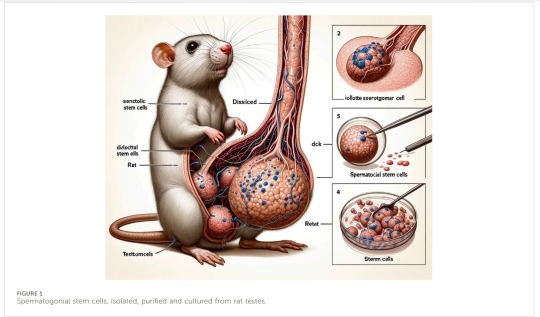
Do I really need to explain? These aren't real body parts. These aren't even words. Shoutout to "rat", the only correct part of this figure. The caption says just about nothing.
This is the image that went viral because... Of course. It's a massive rat dick and balls. But the other figures aren't any better.
Figure 2

This is supposed to represent the JAK-STAT intracellular pathway. JAK and STAT are proteins, and this is supposed to represent how their activation impacts other molecules inside the cell. As you can see, again, not a single real word on that figure, this represents absolutely nothing. You can clearly see that the authors gave the AI image generator "JAK-STAT pathway" as a prompt because every single thing on this image is labelled as some variation of JAK or STAT. Which is pretty funny. Another thing I find hilarious is that the caption underneath the figure is actually a correct description of the JAK-STAT pathway, which leads me to think it was written by a human. For reference here's an actual diagram that represents this pathway rather simply (by Adriana Gutiérrez-Hoya and Isabel Soto-Cruz)

Source
Figure 3

Again, no real words, just a bunch of balls and circles without any meaning. I can't speak about whether or not the caption makes any sense because I'm not too well versed in the topic. Special shoutout to the beautiful word "IMMOUMINOMUDUODIUILATIUCATON" in figure E. I think that was an attempt at saying "immunomodulation".
The content of the text
This review attempts to summarise the current knowledge on spermatogonial stem cells in relation to the JAK-STAT pathway. Spermatogonial stem cells are self-renewing cells located in testicles that allow for continuous production of sperm cells throughout a male mammal's whole adult life. The JAK-STAT pathway is a cellular signaling pathway. What this means, in simple terms, is basically a cascade of proteins inside a cell that talk to each other to say shit like "hey hey hey have you heard that there's a bunch of [X] molecule outside?? We better do something about it." And then they do something about it.
As I've said before I'm not an expert in this area at all. I vaguely know the JAK-STAT pathway, the structure of testicles, and what stem cells do, but it stops there. I do want to discuss the content of this article though, because I haven't seen anyone do it yet and I wish an expert in the field would tell us what the content of that review is really worth.
There are some things that do seem fishy in here. First of all, when I first read the abstract, I was convinced that the whole article was AI generated because it looked like a succession of buzzwords. Turns out, the captions of the figures make sense and the text seems somewhat coherent. I would tend to say it was written by people, albeit in a very boring and unclear way. Then I went to the references to check if they were real. It turns out, at least the references are real articles.
I will not speak on the validity of the claims made in the article because I'm not knowledgeable enough. I've checked some references at random though, and sometimes, they are only very very loosely related to the claim in the review that they're supposed to illustrate, or sometimes just unrelated.
Example: at the beginning of page 7, you can read "miR-34c activates the JAK2/STAT3 pathway, implicated in germ cell
generation and SSC differentiation (Clotaire et al., 2018)." When you go to that 2018 reference, you find out that this paper is not about miR-34c (it's not even mentioned once in that article). It's about another miRNA called miR-19b-3p. I've checked, they are 2 completely different miRNAs. They're not even coded on the same chromosome ffs. The article barely mentions JAK2 and the few times it does mention JAK2, there is no significant result showing any activation of JAK2.
Other example: at several points throughout the review, the authors claim that spermatogonial stem cells have an important immunomodulatory role. I haven't found literature supporting this claim anywhere. The one reference that the authors linked to this claim was absolutely not about immunomodulation, it was about reprogramming spermatogonial stem cells into neurons. What I did find, is several mentions of Sertoli cells (another type of cell present in testicles) having an immunomodulatory role.
Literally a case of [citation needed]. If there is one place where you have to have proper citations, it has to be a review article. This seems like some top tier laziness. I kind of doubt myself because I don't want to believe that someone would make a review where they don't source their information. I want to believe that I understood their reference articles wrong. But for real, check for yourself if you know a bit about biology. I don't think I'm wrong here.
I will not dive further into the content but tell me if y'all are interested. I will read up on rat balls to try and see if there is more bullshit in here, section by section, if you want me to.
The authors
The lovely individuals behind this review are Xinyu Guo, Liang Dong, and Dingjun Hao. All three are part of the Department of Spine Surgery in Xi'an Honghui hospital in China.
Because I don't speak chinese, and because it's common for hundreds or even thousands of people to have the exact same name in China, and because chinese social media is isolated from the rest of the world, it was hard for me to find information about these people.
All I can think is, what were they thinking??
First of all, what are y'all spine surgeons doing writing about rat balls?
First author - Xinyu Guo
For context, the first author is the person who contributed the most to the paper.
It's hard to find information about this person due to a lot of homonyms. However I was able to find 4 other articles from them on ResearchGate, which were about spinal cord injury, the JAK-STAT pathway, and one about reprogramming spermatogonial stem cells into neural-like cells in order to transplant them and help with recovery after spinal cord injury. So I guess that's why they're interested in rat balls. Kind of makes sense, but it looks like spermatogonial sperm cells could be a tool that they use in their research, and not their actual area of expertise which is, ya know. Spines. They seem knowledgeable about spines. I've also found their name in articles that were reports of medical cases and treatments for spinal injuries. I haven't found any online accounts related to this person, even on "scientist" social media like ResearchGate. My hypothesis is that this is a medical doctor turned researcher who got into using stem cells.
I did find this person as a reviewer for a paper in Frontiers in Immunology. If they're also in the field of immunology, that might explain why the review was so adamant that these spermatogonial stem cells have a role in immunomodulation...
Anyway, it doesn't seem very wise to have someone who is not specialised in stem cells to be the main author of a review about stem cells.
Second author - Liang Dong
Again, all I can find on that person is about spines and how to fix them. Articles associated with them are related to spinal cord injuries, spine surgeries, reports about medical cases and treatment efficiency etc. Nothing related to stem cells, except that one fateful review. No social media accounts either that I could find.
Third and last author - Dingjun Hao
Another Mister Spine. An experienced and prestigious one, even. He is (or was, I'm unsure) the president of the spinal surgery department of the hospital all three authors work at. He was also an author on many other papers, including those I found with the first author, so he did read the term spermatogonial stem cells at some point in his life it seems. But with his rhythm of publication (sometimes more than 10 papers a year), there is simply no way he is putting much effort in all of these papers. It seems like he is an old renowned professor, director of such and such department, who gets almost automatically added as an author in all of his colleagues' papers. I doubt he contributed a significant amount to this review. There's even a chance he hasn't read it.
He has been a reviewer for another journal of Frontiers, Frontiers in Surgery. He reviewed various papers on spinal injuries, which is fair enough because it's his area of expertise.
This time though, I got some more fun details. Interestingly, I found this from the website of Honghui hospital:

Looks like our friend won a great prize from the chinese government for his scientific work! Congrats! I'm sure that this botched review and the associated global backlash will not affect his relationship with the chinese government at all!
Overall, it seems like the authors are indeed spine surgeons, probably good ones, but not researchers specialised in stem cells or cellular singaling pathways.
This leads me to think that this review was not a troll at all. The likely scenario, in my opinion, is that, since all institutions need to publish articles to stay relevant (the age old slogan, publish or perish), the first two authors were asked to write a review and did so in a rush, about a topic they're vaguely familiar with. They didn't have anyone available to make cool looking figures, so they resorted to using AI at the last minute. It turned out terrible but they still tried to publish it in a not so prestigious journal, and somehow succeeded. They probably thought nobody would notice because no one would care enough to read it (and fair enough it is boring as hell).
The last author likely just has his name on there because he's the head of the department they work at, and these guys always get the last author spot by default. They're not necessarily very involved in the paper because they don't have time, but it benefits them by inflating their publication count.
The reviewers/the journal
With the way the figures look, there is absolutely no way a reviewer even looked at this paper and gave a favorable opinion. Point blank. Even an editor with very little scientific knowledge would have screamed seeing this. So what happened here?
After retracting the paper, just a few days after the publication, Frontiers released a statement in which they say:
"Our investigation revealed that one of the reviewers raised valid concerns about the figures and requested author revisions. The authors failed to respond to these requests. We are investigating how our processes failed to act on the lack of author compliance with the reviewers' requirements."
It seems like one reviewer (why just one??) raised concerns, somehow their opinion was not taken into account, and the editor still chose to publish without the reviewer's accord which is a huge no-no (means the paper is not in fact peer reviewed).
In a Vice article, one of the two reviewers, Jingbo Dai, (probably the one who didn't raise concerns, as you can tell from his detached attitude) said:
"As a biomedical researcher, I only review the paper based on its scientific aspects. For the AI-generated figures, since the author cited Midjourney, it's the publisher's responsibility to make the decision," Dai said. "You should contact Frontiers about their policy of AI-generated figures."
This is utter bullshit, because the figures are 100% part of the review, they are a "scientific aspect", and if they are inaccurate it's totally the reviewer's job to call them out. This guy simply doesn't give a shit. He shouldn't have accepted to review this paper if he didn't want to bother doing the bare minimum. If by "scientific aspects" he means the text, had he checked the references, he would have noticed some shit to fix as well.
Basically, what happened is that at least one reviewer didn't do his job, the editors flat out didn't look at what they published, and they only bothered looking at it when the backlash started. A nice chain of incompetence.
Conclusion
What does this mean for the scientific community?
It's important to note that the reason this article was even retracted is thanks to online backlash from the scientific community. What corrects science? More science. Better science. Not your aunt who "did her own research" on Young Living's facebook page.
Many in the scientific community are now more than ever highly critical of Frontiers, saying they will never publish in or review for them. The reputation of the journal is severely tarnished in the eyes of many, and one can hope that this will make editors look twice before they publish bullshit.
This may or may not be a career-ending mistake for the authors as well. We will see in the following weeks or months if they get to keep their jobs. They might not be able to publish in scientific papers ever again due to bad reputation. But I don't think they will have to stop their work as surgeons, since this is a completely different activity.
For me, this whole ordeal is a reminder that scientific journals are, first and foremost, businesses. Ultimately, they don't give a shit if what they publish is true. They only pretend to care about scientific integrity to maintain their reputation.
I hope that this will also encourage co-authors, especially senior researchers who get the last author spot by default, to be more cautious about what kind of papers they're willing to put their name on. And I hope this encourages institutions to lower their push for their researchers and doctors to publish publish publish no matter the quality, just so they can flex how many papers came out of their institution.
If anyone actually read this entire thing, thank you so much. I am very grateful that you found my rant good enough to read. If you have any additional information or corrections, please share them! Because this is just something a master's kid wrote in a boring afternoon, so there might be some errors. Have a nice day and uh... stay sciencing
#rat penis scandal#science#stem cell research#biology#frontiers#research#scientific research#can't believe I wrote this#long post#deep dive#scientific scandal
3 notes
·
View notes
Text
What do the PenisSMP, the Ratatouille musical, and Goncharov (1973) have in common?
incredible fandoms, creative story telling, unreality and engaging content!
also all three happen in the same universe in this essay I will…
#The fact that no one is talking about how penis smp clearly drew some inspiration from Goncharov 1973#the clock to cock imagery?!#The betrayals?! It’s all there people!#and the rats?#with the homoerotic food imagery?#And the cook book that constantly shows up throughout the film?!?! Gusto’s book perhaps?!#anyone can cook andrey#but not me#not this time.#goncharov#penis smp#ratatouille musical#unreality
17 notes
·
View notes
Text
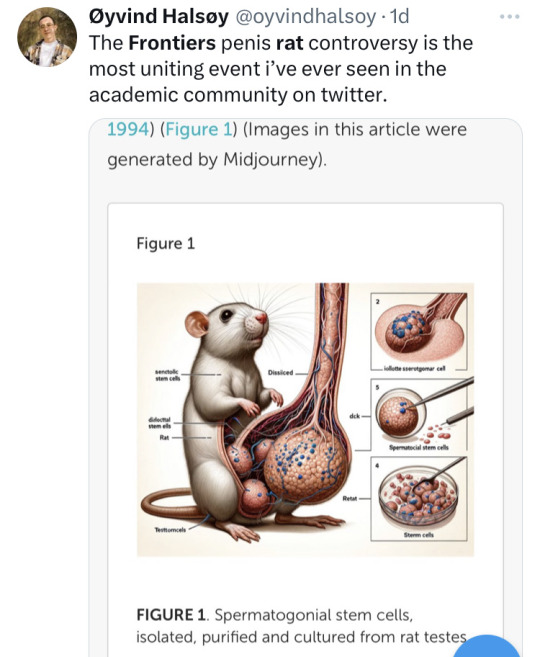

i don’t know if this blowing up anywhere besides science twitter but a paper got peer reviewed and published in a frontiers journal (which are known as like mid tier but still reputable) that has this massive AI generated rat penis figure and some other nonsensical AI figures and yeah it probably speaks to how the peer review system is broken and the process of sharing and vetting science is doomed etc but also it’s SOOOO funny to me to see people so dramatic like “if someone had a shred of courage and integrity” about big penis rat
22K notes
·
View notes
Text
scientists who will go unnamed: get research papers copied and pasted from AI past peer review and into journals
reviewers #1 and 2 reading my work: this is pretty good, consider maybe rewording these parts to make your methods more clear :)
reviewer #3, reading my work: this is embarrassing. you should have never submitted this to our journal. kill yourself.
#suicide mention#suicide bait#that’s academia baybee!#academia#ai#the rat penis paper#ths ‘sure here’s an introduction for your topic’ in elsevier#peer review
0 notes